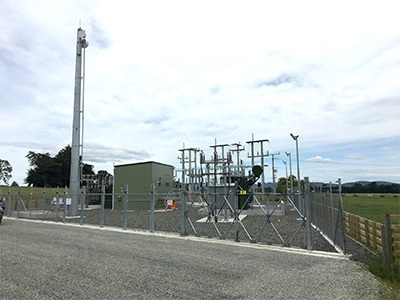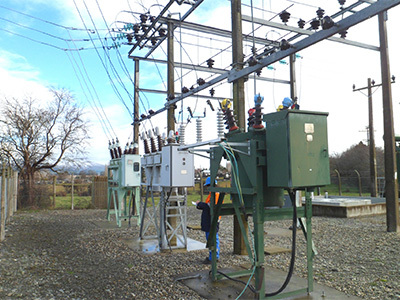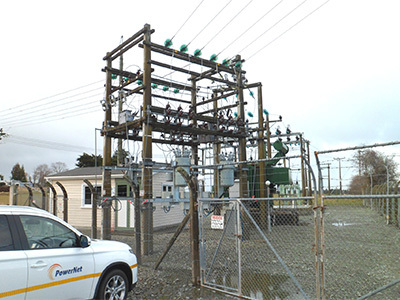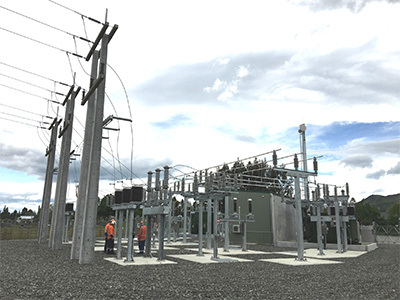Increased load demands and generation constraints were primary drivers of PowerNet’s Oreti Valley Upgrade programme. It was successfully commissioned in September 2019 after completion of the final stages of works.
Edison were engaged in 2014 to deliver the initial high level scope of works for the six substations and associated communication network. At the early stages, a switching station at Castle Rock was considered necessary to maximise capacity. However, utilising our in depth engineering and operational knowledge Edison were able to optimise the solution. We determined that a new switching station at Castle Rock did not provide the operational or cost benefit to warrant it being built. Therefore we sought to make Lumsden the major switching nodal point.
Subsequently, Edison were engaged to complete the conceptual and detailed designs for the following substation upgrades:
- Lumsden substation - upgrade the substation from 33/11 kV to 66/22 kV
- Heddon Bush – 66/33 kV transformer and 33 kV switchyard decommissioning
- Mossburn substation – new 66 kV bay and protection for the 33 kV circuit to be repurposed at 66 kV; 33 kV switchyard decommissioning
- Riversdale substation - upgrade the substation from 33/11 kV to 66/22 kV
Our Solution:
Critically, our combined engineering knowledge and analysis uncovered the operational and cost benefits of optimising the substation design at Lumsden negated the development of a new switching station at Castle Rock. As a result, PowerNet potentially saved in the order of $2M of their project costs.
At Lumsden we were responsible for the initial high level scope to conceptual design and detailed design to upgrade the substation from 33/11 kV to 66/22 kV. Our team tackled and resolved a number of complex design challenges:
- PowerNet required the existing substation to remain in service during construction as there is limited ability to backfeed the site and turning the lights off was not an option. These operational and spatial complexities were worked through with the assistance of a full 3D model of the site. Afterwards, we developed a construction plan and staged drawings to clarify the works for the network operations and installation teams. Robust safety in design and constructability reviews were held with all stakeholders.
- The rapid increase in irrigation within the region added further complexity. The location and value of this load proved difficult to predict and at a level not often experienced. The initial concepts were based on PowerNet having their mobile substation available for these works, however it was not. The back feed arrangements and changeover sequencing were reworked but in some instances the load increase made these planned arrangements no longer viable. This necessitated quick responses using sound engineering judgement of:
- operational risk,
- unintended consequences of deferment
- project cost
- landowner considerations relating to the line works.
The solutions involved a mixture of deferred outages, voltage regulators and mobile generation.
- Balancing protection and earthing designs alongside earth fault detection and clearing.
Key Results:
- Cost savings
- Operational efficiencies
- Benefits of keeping existing substation in operation





